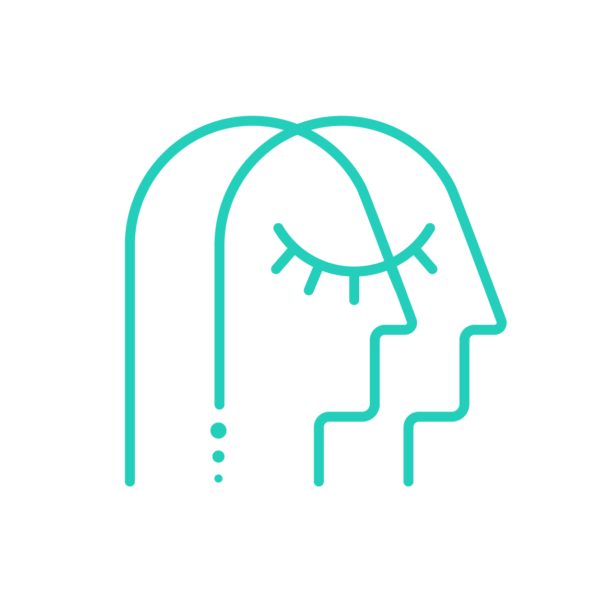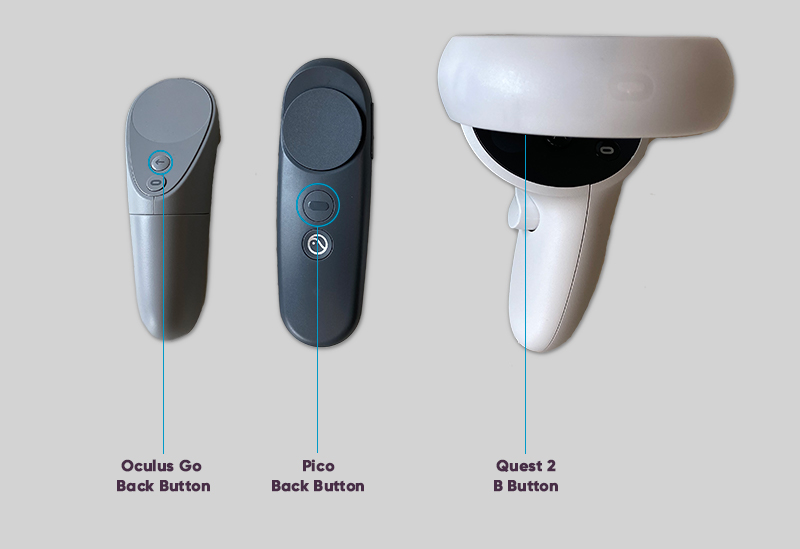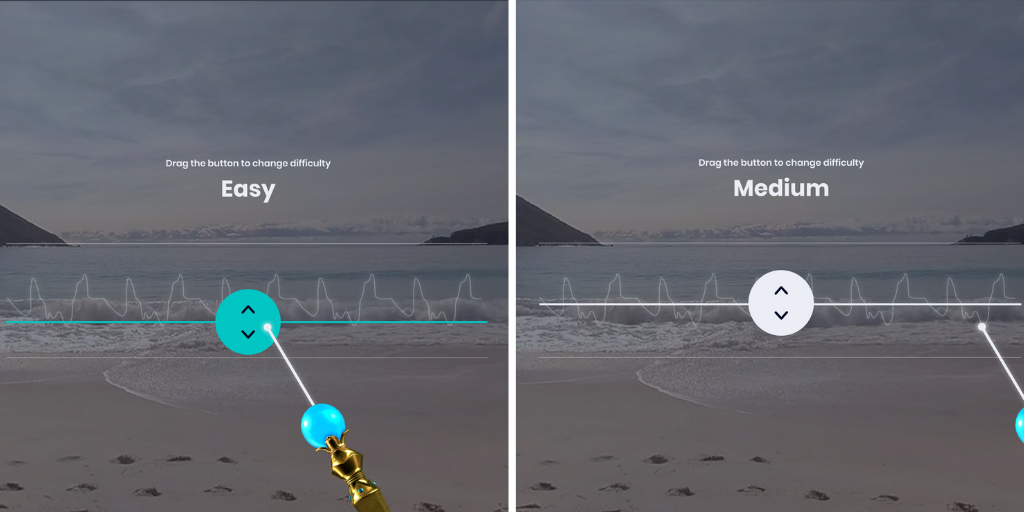




Just getting started? We answer some common questions to help you better understand how to use Healium and the BrainLink EEG headband.

When Healium VR is used with the BrainLink Lite EEG headband, you are measuring a flow state or a “focused calm”. Let’s take a deeper look at the algorithm, choosing the experiences, threshold settings, and instructions for users new to virtual reality as a wellness tool.
When you open the Healium app it asks you if you are using an EEG headband. If you select “Connect,” the software will connect to the headband using Bluetooth technology. Read these instructions for help connecting the BrainLink to your Oculus headset.
For the first 20 seconds, the system will collect EEG data without providing any feedback. It uses that baseline information to create a starting threshold. The exact calculations are done in the background of the app.
When you begin an experience, you’re able to see a representation of your EEG data in the form of a small moving ball of light (firefly) at the bottom of the screen. As you relax or become more engaged and alert, the firefly moves higher above the baseline. The height of the firefly indicates success in the protocol. As long as you remain above the threshold (solid line), you are being successful in shifting your baseline brainwave patterns in the desired direction.
When this happens, the VR experience progresses without interruption. If you happen to become stressed or unfocused during the experience, the firefly drops below the threshold and triggers a change in the form of dimming of the environment, a pause of the experience, or a red tint covering the experience. This is the feedback, helping you become more aware of your internal state.

As soon as you return to the desired state of consciousness, the firefly moves above the threshold line, and the experience proceeds without the “negative” feedback.
This approach is not usually recommended for acute stress reduction as it typically requires a bit of repetition to learn what internal states influence your brainwaves and the feedback. In addition, this training can take a variety of forms depending on which protocol is used, which experience is selected, how the feedback is displayed, and how the thresholds are set. I will discuss each of these below.
What happens when you engage in an activity that calms you but keeps your focus? You’re so entranced that time passes with no meaning. You’re alert but not overstimulated. Your thoughts come and go without worry. You feel peaceful with yourself. We call this feeling “flow”.
Getting into a flow state is important for high performers, starting a task that requires a lot of focus, or developing creative thoughts. Flow occurs when you become more relaxed, reduce ruminating/worry, or excessive thinking. This can be particularly helpful as an adjunctive tool if you’re managing stress, reducing anxiety, or increasing your mental resilience.
Focused calm feelings can help those managing ADHD, depression, or cognitive difficulties. Use this protocol for a midday mental health break before returning to a work task or a project that needs your attention.
It’s important to remember that in these scenarios you might be engaging in a brain wave pattern that may feel challenging or unknown. With this in mind, the other elements of the experience become important considerations.

It’s common to start with experiences that are naturally relaxing and pleasing, such as Relaxing Beach, or Waterfall. These experiences provide soothing environments, gentle music, and easy guidance into a relaxed and pleasant emotional state.
Beginning with one of these experiences increases the likelihood of success when first starting with virtual reality meditation. This can be important as you get used to VR/AR, learn to recognize your increasingly subtle internal states, and develop the ability to connect your internal state to external feedback. Once you have achieved some basic skills, it may be helpful to switch to experiences that are less directive.
Several experiences offer a nature-based visual environment without music or verbal guidance. This requires you to enter the desired mental/emotional state with only minimal support. Once you have achieved success with this level, it can be helpful to introduce experiences that require you to change the environment from “negative” to “positive” through your success with the neurofeedback protocols. The Big Tree and Calm the Storm are good examples of this type of experience.
By default, the firefly is displayed at the bottom of the screen. This is a visual representation of your success. The higher the firefly is above the baseline, the “better” you’re doing at shifting your brainwave pattern.
While this is a useful image, it can also add some challenges. At first, you may find the presence of the firefly distracts you from the content of the experience, minimizing the impact. In addition, the presence of the firefly can create feelings of competition or a tendency to use mental effort to move the firefly.
In these cases, you’ll typically be less successful. Particularly for beginners, we recommend toggling the firefly “off” and simply using the dimmer or red tint feedback as an indication of success.
The firefly can be turned off by pointing your controller at the firefly and pressing the trigger button. It will also display as only a glowing orb if you want to remove the distraction of the trail and movement.

To change the dimmer tint, press the B Button (Oculus Quest 2) or the back button (Oculus Go, Pico) . This brings up a settings menu. Choosing between the dimmer or red tint feedback options is a personal preference. The dimmer may provide more subtle feedback but maybe frustrating as the screen becomes more difficult to see.
Healium calculates a starting threshold based on the first 20 seconds after the initial BrainLink headband connection. The assumption is that the baseline state represents our brainwave patterns in an average state without trying to relax or focus.
While the starting threshold often works just fine, it is sometimes necessary and important to adjust the threshold for personal preference or training needs. Point your controller at the firefly and click and hold the trigger to adjust the slider bar allowing you to make the threshold easier or harder.

As you move the slider, you will see the threshold move up or down on the firefly graph. When first starting to use virtual reality technology or neurofeedback we suggest adjusting the threshold to make it relatively easy until you feel more comfortable.
However, if the threshold is regularly set “too easy” it is not actually providing any useful feedback. If you never see a change in the feedback, there is no way to connect it to your internal state. Once you feel comfortable with Healium, we suggest adjusting the threshold so that it is triggered by the firefly movement between 20 and 50% of the time.
 Again, some of this is a personal preference and individual variability. Some people learn better with minimal feedback while others need more. If the threshold is set “too difficult” and you are constantly receiving feedback, this is also not helpful and can create frustration.
Again, some of this is a personal preference and individual variability. Some people learn better with minimal feedback while others need more. If the threshold is set “too difficult” and you are constantly receiving feedback, this is also not helpful and can create frustration.

As soon as you are presented with any kind of information about your physiology and a goal, the tendency is to “do something” to make it change which results in over efforting.
You’ll do best with very gentle shifts in your attention. When using Healium you should aim to be “relaxed, but alert.” It can also be helpful to direct your attention to the content of the experience. For example, keep this in mind when beginning: “Let the experience guide you. Keep your attention on what you see and hear. Do your best to follow along with any instructions. When you find your attention shifting to other things, see if you can return to the experience.”
For the Calm experience, relax the muscles in your body, slow your breathing, and put a slight grin on your face. All of these instructions shift the nervous system into a more relaxed, parasympathetic state.
After your experience, it’s helpful to ask yourself, “what did I notice?” Of course, the question is really orienting toward your internal experience. If we can help you increase your awareness of your internal state, this leads to the greatest likelihood of change.
Want to know more about how long the effects of Healium last?